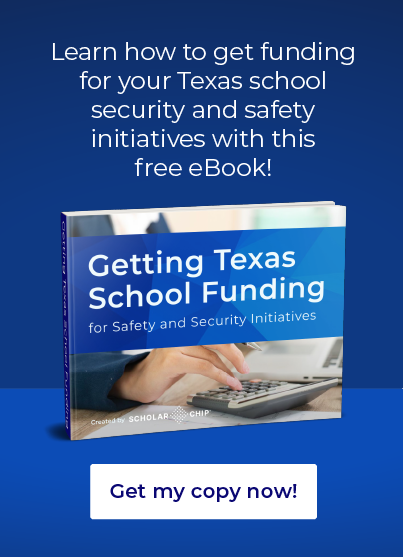In 2018, Texas joined the growing list of states that have had to deal with the reality of a school shooting. The shooting in Santa Fe, Texas, on May 18, 2018, spurred the state legislature to look at what moves it could make to improve the safety and security of Texas schools.
Three bills were signed into law by Governor Greg Abbott in 2019. Among those bills was Texas House Bill 1387, which sought to increase the number of trained marshals allowed in a school.
Increasing the number of school marshals, however, is only one type of protection that these institutions can provide, and some argue that it is a limited and reactionary one. Are school marshals an effective means of protection for students and staff? What does HB 1387 mean for other safety initiatives in the state?
What Is Texas House Bill 1387?
In June 2019, Texas Governor Greg Abbott signed HB 1387 into law. The bill proposed an increase in the number of school marshals allowed in public, charter, and private schools by lowering the student-to-marshal ratio. Initially, the marshal program—which was started in 2014—permitted schools to appoint one marshal per 200 students or one marshal per campus building, whichever was greater. With the new law in effect, that ratio changes to one marshal per 100 students.
The program requires that designated staff receive specific school marshal training to prepare them in the event their campus faces an active shooter situation. The identity of these trained marshals is kept anonymous, and they are licensed to carry a concealed firearm on school grounds to protect students and other staff.
The Impact of House Bill 1387
Whether a supporter or detractor of the law, one thing is for sure: Texas House Bill 1387 is a very limited solution to the problem of school safety. A marshal’s extensive training is important for the safety of students, but as a security measure, it is only significant in the case of an active attack. It is questionable if the existence of school marshals acts as an effective deterrent.
Additionally, while more marshals in a school increase the likelihood that one will be close enough to intervene to stop an attacker, their participation would occur after a safety incident has started.
The safety bills introduced in the wake of the Santa Fe shooting included increased funding for school safety initiatives. Schools, however, must consider the cost of other, more preventative, data-driven safety programs in addition to the cost of training additional marshals.
Effective School Security Initiatives
Hardening school security and adding resources trained to intervene in an active security situation is only one element in what should be part of a comprehensive school safety plan. In-the-moment, reactive initiatives are only effective during an incident.
Prevention is arguably a more effective path. Implementing preventative measures not only curb violence and crime in schools, but they also improve the overall environment, the experience of the individual students, and student outcomes.
Programs that identify behavioral issues in classrooms make it easier for teachers and administrators to address a student who is acting out or aggressive before their actions become severe. This can help students in the classroom feel safer and provide a better learning environment for the larger group, while also initiating mechanisms within the school that provides a troubled student with expanded support.
Administrators should also consider allocating resources for better attendance tracking. Recognizing when students are trending toward chronic absenteeism can be an early warning sign that indicates problems within the school community, including potential bullying. Attendance tracking can also pinpoint other issues in a school, like crime and drug abuse, which can be precursors to broader safety concerns.
Investing in technology solutions that enable attendance monitoring and classroom behavior tracking are proven methods that create a positive school climate and improve student in-class experiences. Programs that incorporate these preventative measures should be considered alongside campus hardening and active violence response initiatives to promote long term safety and security.
Texas House Bill 1387 is one of several tools lawmakers have put in place following the Santa Fe school shooting to keep students safe. The law means that there will be a greater number of trained response teams available in the unthinkable event of an act of violence in a Texas school.
However, active incident response planning is only one facet of school safety and a very limited one. Gov. Abbott and the rest of the state legislature understands this, as other school safety bills introduced at the same time as HB 1387 included guidelines for prevention and addressing mental health concerns. While some focus has been placed on physical campus security and incident response training, it is crucial that schools also consider preventative measures like attendance monitoring and behavior tracking. These methods are proven ways to improve the overall school environment, making students feel safer while also setting students up for success. The focus is on giving students the support they need to learn and grow in a positive environment. The result is safer schools.
ScholarChip offers a solution called Alternative Behavior Educator (ABE). This innovative program enables school administrators and counselors to identify, monitor, and improve student behavior throughout a student’s career while giving them powerful data-driven reports that quickly flag at-risk students, help monitor and chronicle progress, and help them identify school safety risks before incidents.
To learn how ScholarChip can help make Texas schools safer or get free recommendations, feel free to contact us for a free 1-on-1 consultation today!


